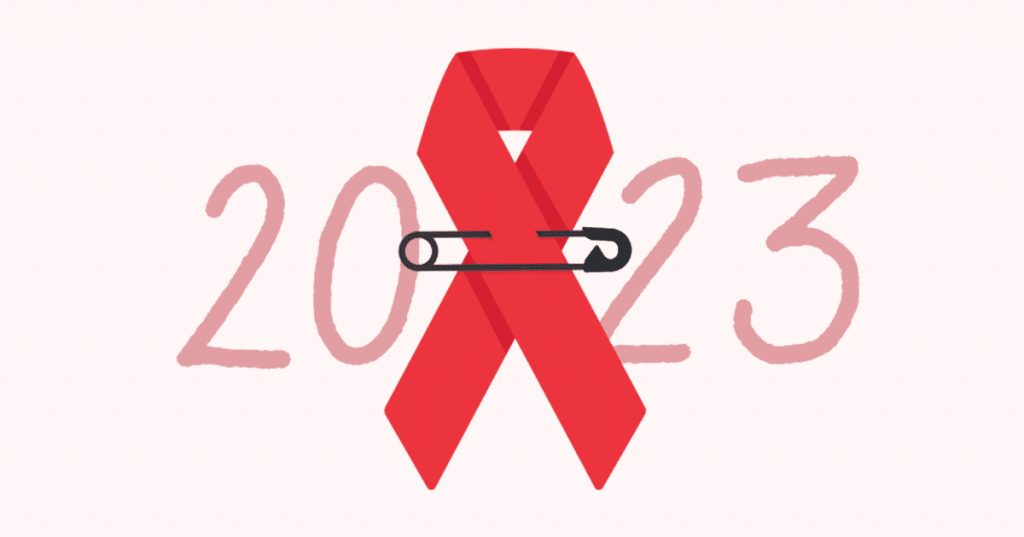Understanding HIV: Myths, Realities, Symptoms, and Comprehensive Health Approaches
By Proud Lebanon’s interns
HIV (Human Immunodeficiency Virus) remains a persistent global health concern, affecting millions of lives worldwide. While HIV transmission is not easy, its profound impact on health and quality of life necessitates widespread awareness and education. This article aims to provide a comprehensive understanding of HIV, dispel myths surrounding it, explore its symptoms, delve into prevention strategies, address psychological impacts, discuss testing methods, explore treatment approaches, and emphasize the importance of holistic care for individuals living with HIV.
Understanding HIV and Its Symptoms:

At its core, HIV is a virus that targets the body’s immune system by attacking White Blood Cells. If left untreated, HIV can progress to its advanced stage known as AIDS (Acquired Immunodeficiency Syndrome). Recognizing the symptoms is crucial for early detection. Common symptoms of HIV infection include fever, sore throat, fatigue, swollen lymph nodes, and a skin rash. Additionally, individuals may experience muscle aches, joint pain, night sweats, and mouth ulcers during the early stages of infection. As the virus progresses, it weakens the immune system, leading to more severe symptoms and opportunistic infections.
Dispelling Myths and Understanding Transmission:
Dispelling misconceptions is vital in understanding and addressing HIV. Contrary to some beliefs, HIV is not transmitted through casual contact like kisses, hugs, or sharing food. It spreads through infected bodily fluids such as blood, breast milk, semen, and vaginal fluids. While HIV symptoms typically manifest 2 to 4 weeks after exposure, some infected individuals may not exhibit symptoms for several years, making it crucial to undergo regular testing, especially after potential exposure.
Prevention Strategies:
Prevention strategies encompass a multifaceted approach. This includes promoting abstinence, avoiding needle-sharing, consistent and correct condom usage, and medical interventions such as PrEP (Pre-Exposure Prophylaxis) and PEP (Post-Exposure Prophylaxis) to prevent HIV transmission. By adopting these strategies, individuals can significantly reduce their risk of contracting HIV.
Psychological Impact and Holistic Care:
Psychological aspects are paramount in HIV care. Individuals may face HIV phobia, anxiety, mood disorders, cognitive impairments, stigma, discrimination, fear, isolation, and depression. Addressing these concerns through support groups, relaxation techniques, maintaining a healthy lifestyle, and seeking professional mental health assistance is crucial for overall well-being.
Testing Methods:
Testing for HIV involves various methods such as Rapid Tests (Available in Proud Lebanon), PCR, ELISA or EIA tests, Western Blot, and self-tests. These diverse testing methods offer options for diagnosis and early intervention, empowering individuals to take charge of their health.
Treatment and Health Management:
Treatment for HIV primarily involves antiretroviral therapy (ART) aimed at controlling the virus and enhancing overall health. While treatment can manage HIV, there is currently no cure. Delaying treatment can harm the immune system, increase the risk of transmission, and lead to disease progression.
By fostering a comprehensive understanding and approach to HIV, we can strive towards better health outcomes and improved quality of life for those affected. Raising awareness, dispelling myths, embracing prevention strategies, addressing psychological impacts, utilizing diverse testing methods, and emphasizing holistic treatment approaches are crucial steps in combating the virus. This article aims to meet the expectations of providing essential insights into the multifaceted aspects of HIV, encouraging informed discussions, and advocating for compassionate and effective care for individuals living with the virus.



